How to grow lilies — the best way to plant the bulbs and fill your pots and borders with these fragrant favourites
Learn how to grow lilies in 5 easy steps
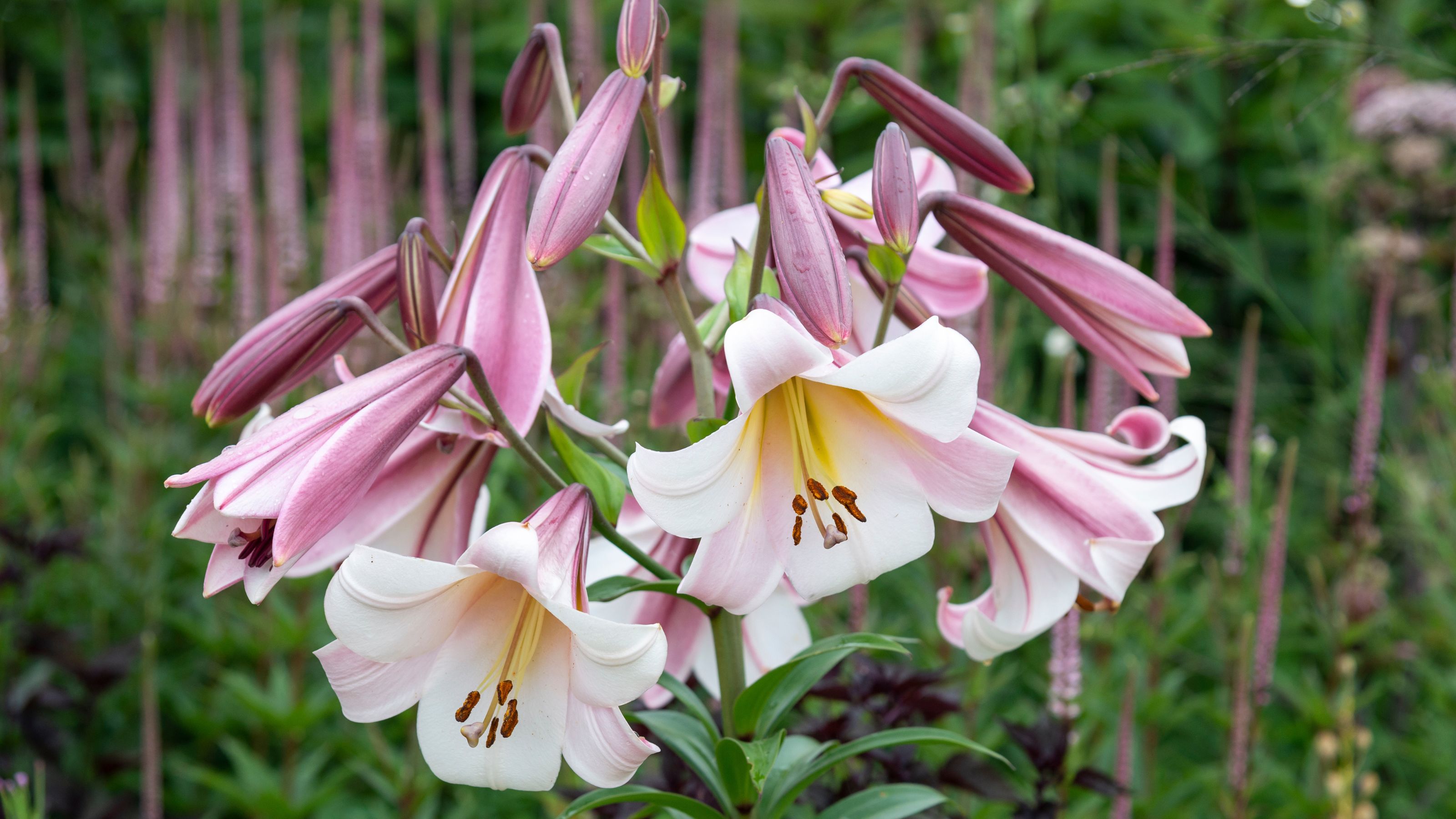

Lilies look wonderful in a vase or bouquet, but did you know you can learn how to grow lilies in the garden, too?
It sounds a little daunting, but as long as you know when to plant lily bulbs, and have a few planting and care tips under your belt, they're surprisingly easy to look after — and incredibly rewarding.
If you're hoping to pepper your garden border ideas with beautiful flowers and fragrance, look no further than our guide on how to grow lilies...
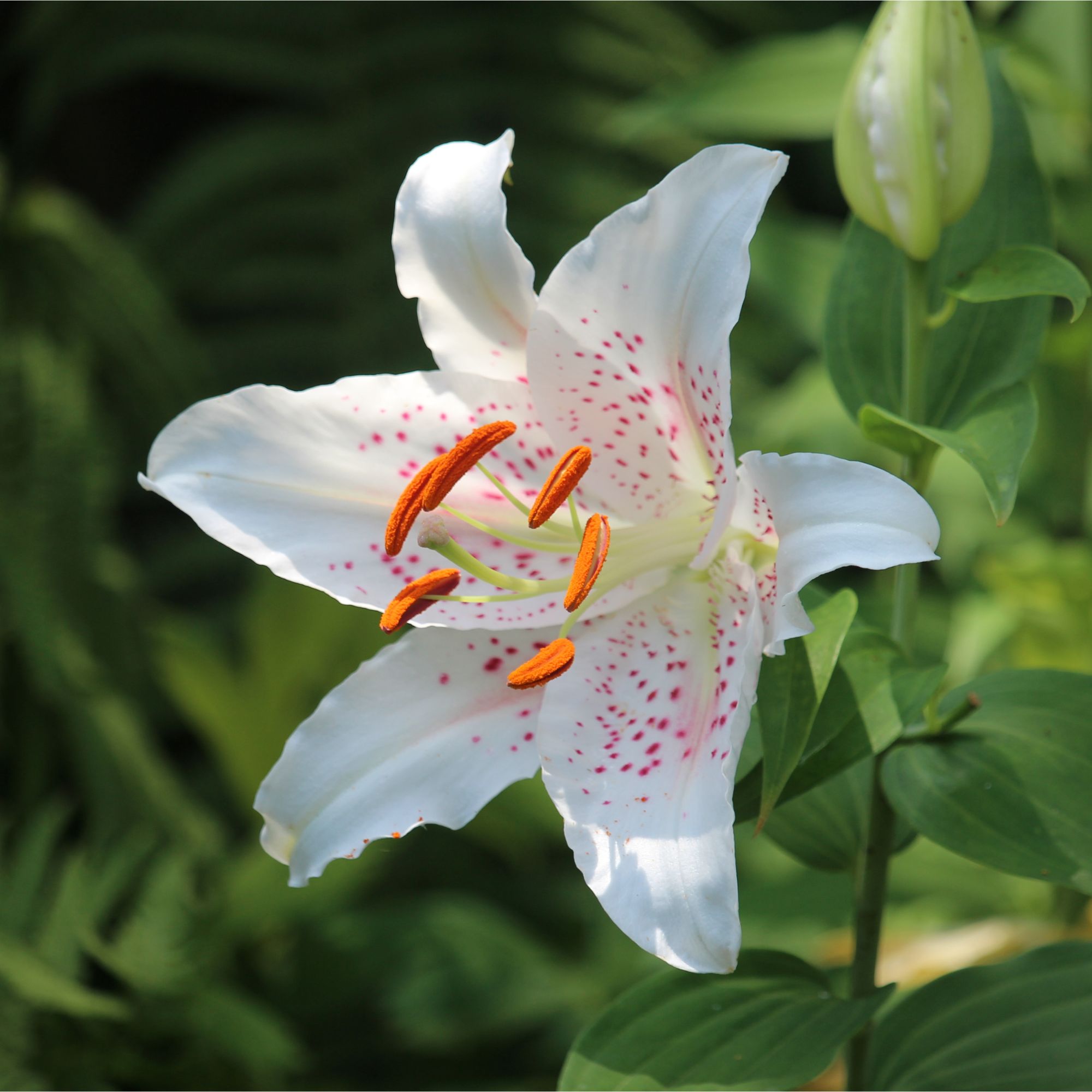
1. Choose your bulbs
Before you learn how to grow lilies, you’ll need to decide which type of lily you want to grow.
There are two main types: Asiatic lilies and oriental lilies.
‘Asiatic lilies are easier to grow and come in a greater variety of colours,’ explains Samantha. ‘They grow best in alkaline soil.
‘In contrast, oriental lilies thrive in acidic soil. They are scented and their flowers tend to be larger than Asiatic lilies.’
You’ll also need to check the condition of the bulbs, ensuring there are no signs of softness or mould, according to Samantha.
Where to buy lily bulbs:
- Crocus: Take your pick from this beautiful range of lily bulbs.
- Sarah Raven: Get started with Sarah's Scented Lily Collection.
- Thompson & Morgan: Another huge selection of lily bulbs to choose from.

Samantha Walker has worked at M&S for over 12 years. Her role as floral product developer combines her knowledge and passion for plants and flowers with her mission to create products that delight and inspire M&S customers.
2. Pick a planting spot
Then, you’ll need to decide where you’re going to grow your lilies. They need the right amount of sunshine to thrive.
‘The best place to plant a lily is in a location that has full sunshine for at least half of the day,’ says the garden team at Polhawn Fort. ‘If there is too much shade, the stems will tend to lean towards the sunlight.
Once you’ve chosen a planting spot, you’ll need to think about the soil.
‘Ideally, they like rich, relatively moist, yet free-draining soil,’ says Samantha from M&S.
That’s why it’s a good idea to incorporate some organic matter — so if you’ve learned how to make compost, now is the ideal time to use it!
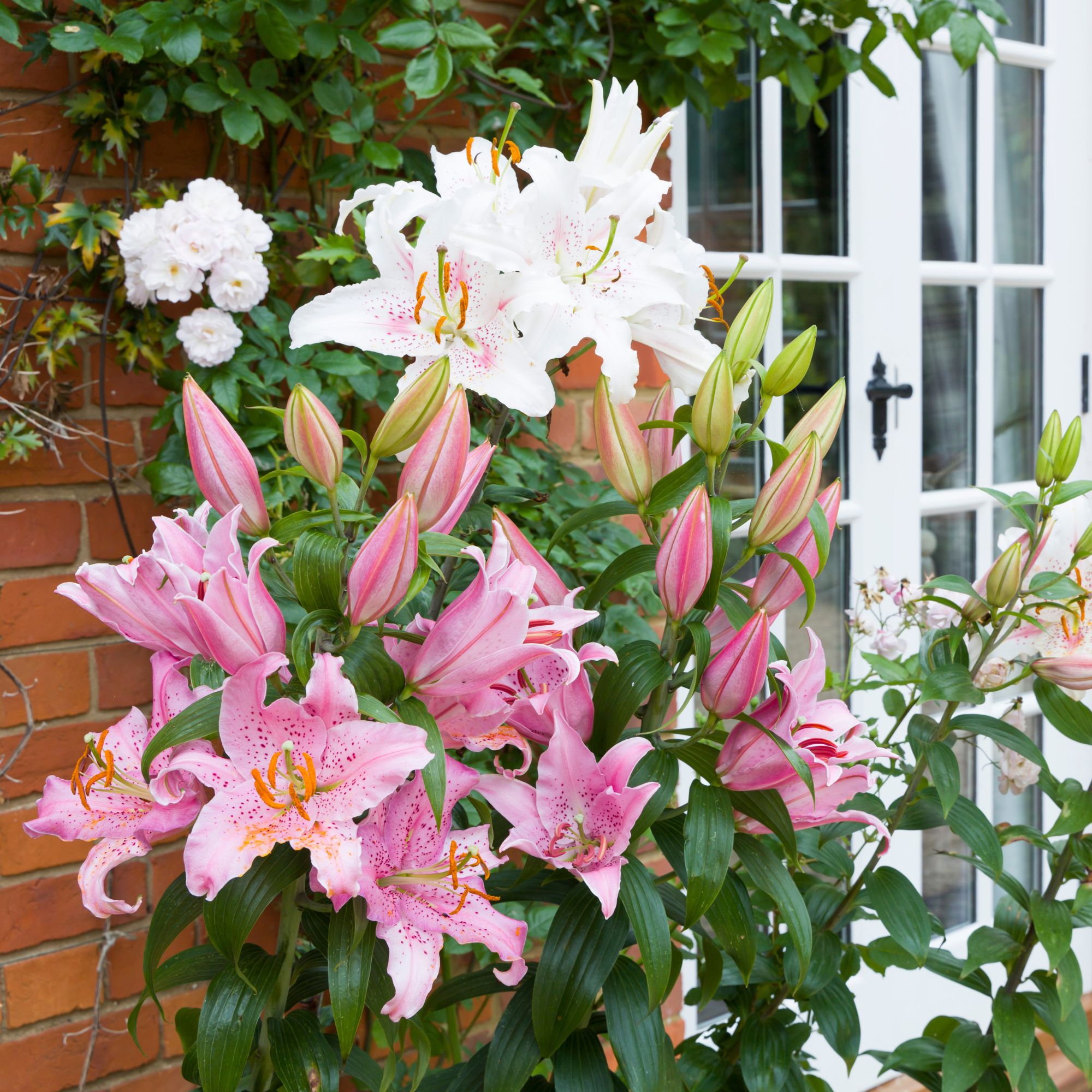
3. Plant the bulbs
Now, it’s time to plant your bulbs. You’ll need to be careful when handling them, though.
'Be gentle with your bulbs and plant them as soon as possible, because lily bulbs do not have a protective coating like other bulbs and can dry out easily,’ explains Polhawn Fort’s garden team.
Planting at the right depth is also important. ‘Plant two to three times the depth of the bulb, pointed end up,’ advises Davenport House's head gardener, Alison.
If you’ll be growing your lilies in containers, you’ll need to choose a pot that's nice and deep. ‘Plant the bulbs around 15cm apart and ensure they have at least 12cm of soil above them,’ advises Samantha from M&S.
Taller lilies also require staking (you can buy bamboo sticks from Amazon), and Alison recommends popping the stakes in the soil at the same time as you plant the bulbs. ‘This way you won't damage the plant by doing it later,’ she explains.
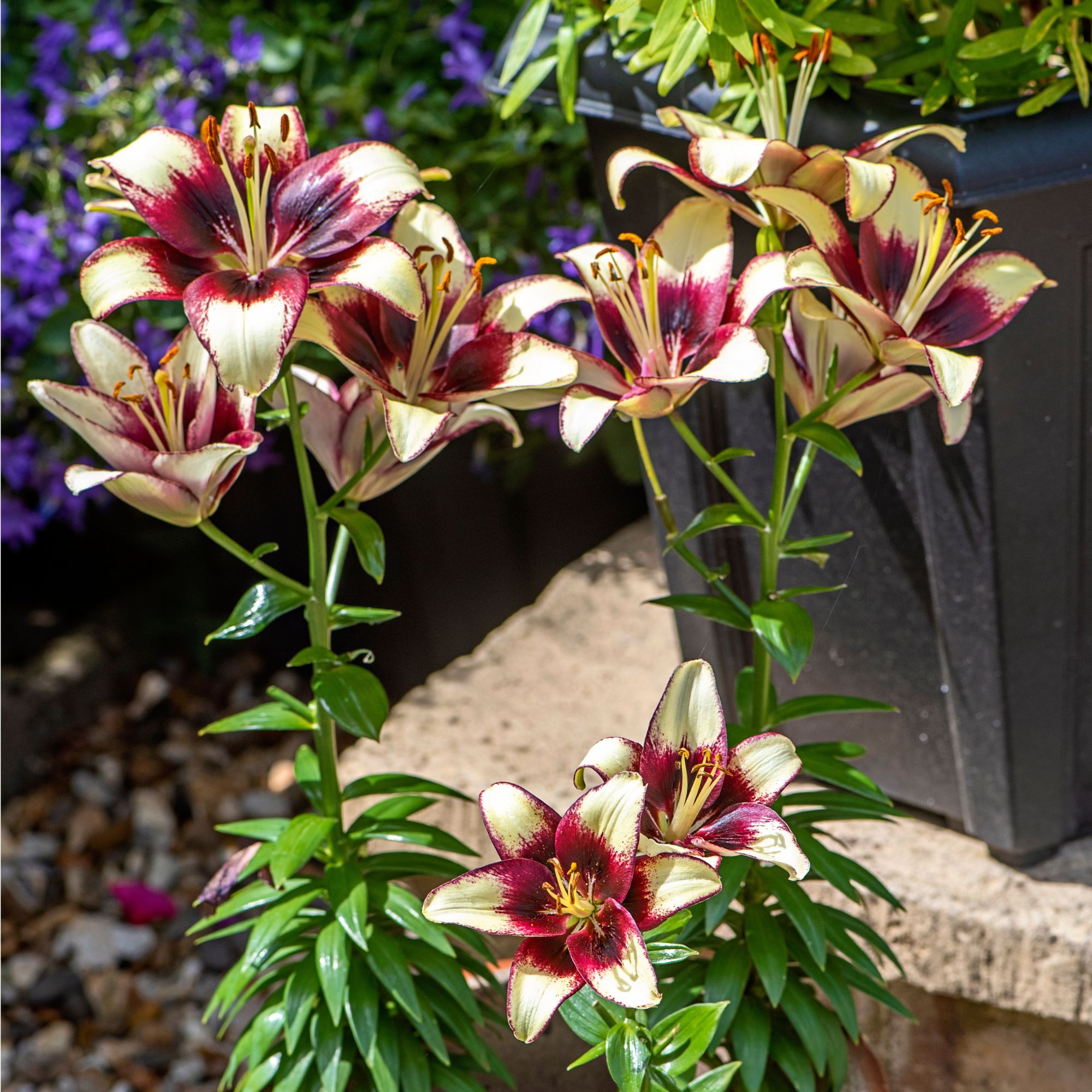
4. Water them correctly
You should never let your lilies dry out, but you shouldn’t overwater them, either. It’s one of the most common garden watering mistakes for a lot of plants, and lilies are no exception.
‘Keep the soil moist but do not allow it to get soggy as lilies do not like wet soil,’ warns Polhawn Fort’s garden team.
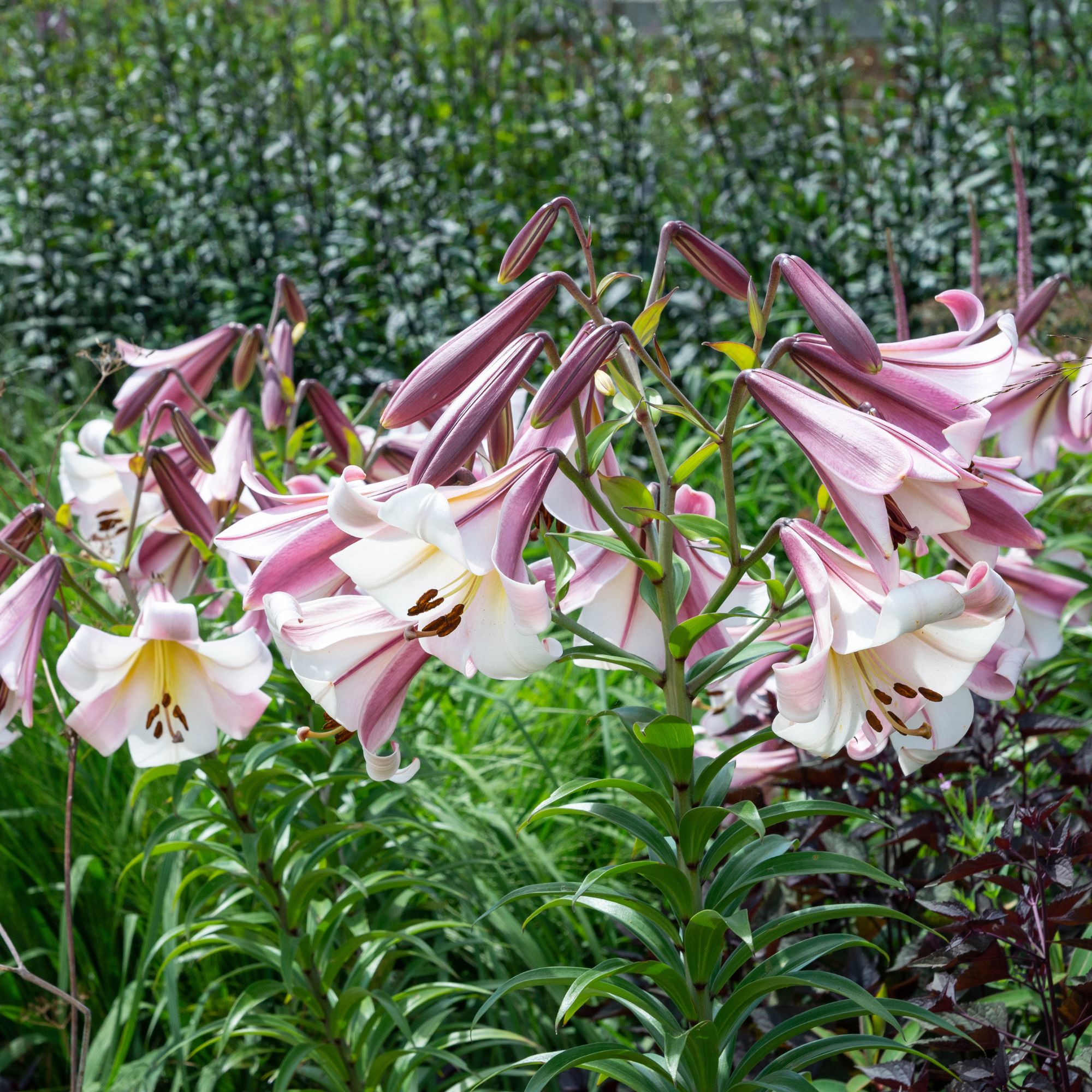
5. Don't forget about aftercare
Once your lilies begin flowering, you can think about feeding them.
‘When your lilies start to flower, I’d recommend feeding them every fortnight,’ says Samantha from M&S. ‘Tomato feed works great.’
You can buy Levington Tomorite from Amazon for just £3.97.
‘It’s also important to deadhead lilies to prevent the plant from wasting energy producing seeds,’ Samantha adds.
Watch out for garden plant pests like lily beetles during the summer, giving your plants a weekly checkover. ‘You can spot them on the underside of the leaves,’ says Alison from Davenport House. ‘They are red, so they’re easy to spot — simply squash them with your fingers.’
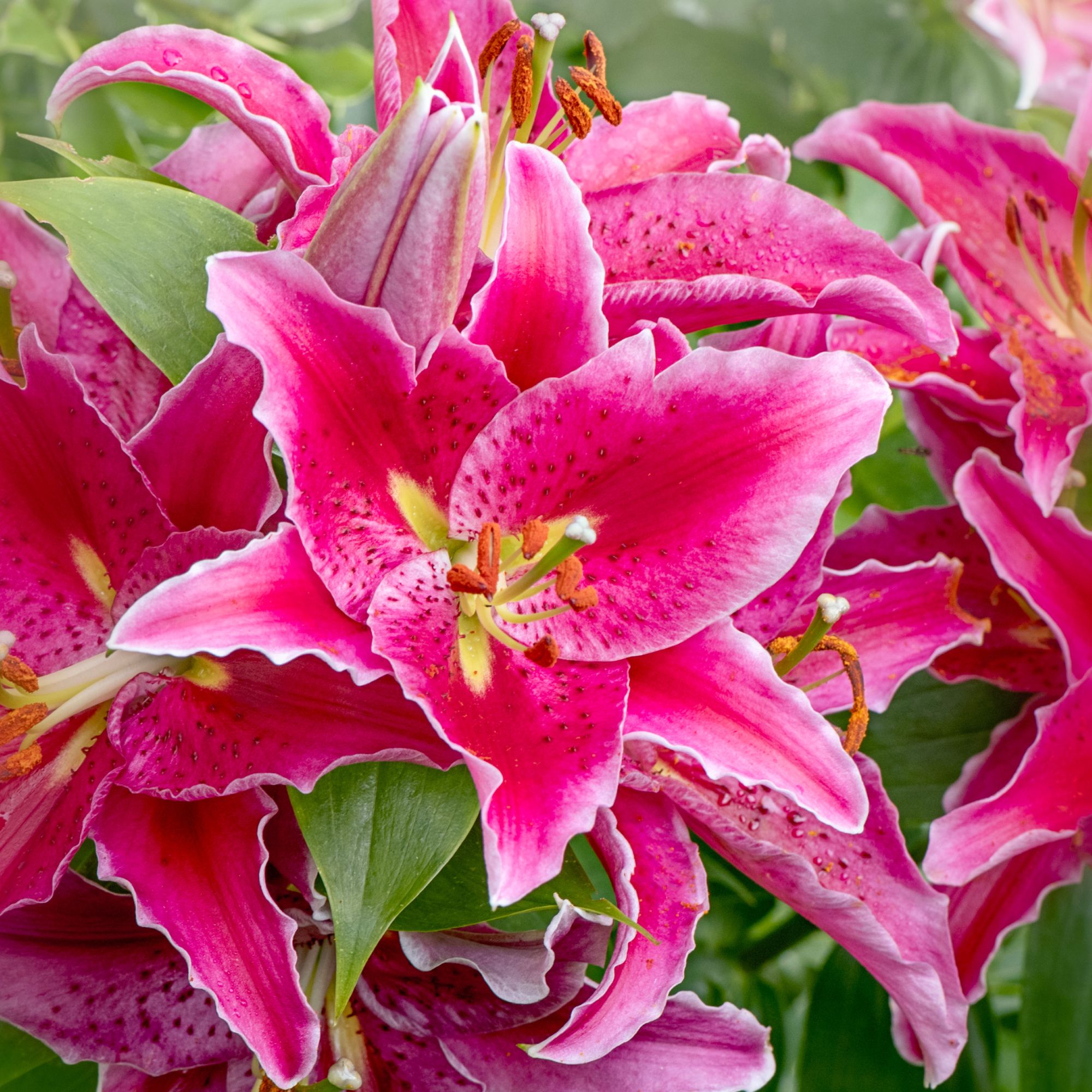
FAQs
Do lilies grow better in pots or ground?
Experts generally agree that lilies do well in pots and the ground — but Davenport House's head gardener, Alison, says it depends on your soil.
'In the right conditions, lilies grow happily in the garden, but at home, I'm on heavy clay soil,' she says. 'Although I've improved it over the years by mulching, its still not suitable for lilies — they simply don't survive the winter and rot off.
'I grow lilies in pots so I can control the soil and their position.'
It's a long way off until you have to think about what to do with lilies after flowering, especially if you get them off to a good start with our tips.
Get the Ideal Home Newsletter
Sign up to our newsletter for style and decor inspiration, house makeovers, project advice and more.

Sophie joined the Ideal Home team as Gardens Editor in June 2024. After studying English at Royal Holloway, University of London, she began writing for Grow Your Own, which spurred on her love of gardening. She's tried growing almost every vegetable under the sun, and has a soft spot for roses and dinnerplate dahlias.
As Gardens Editor, Sophie's always on the lookout for the latest garden trend. She loves sharing growing hacks for every space, from herbaceous borders to balconies.
You must confirm your public display name before commenting
Please logout and then login again, you will then be prompted to enter your display name.
-
 Should your front door colour match your hallway? Interior experts reveal 3 reasons why it should (and 3 reasons it shouldn't)
Should your front door colour match your hallway? Interior experts reveal 3 reasons why it should (and 3 reasons it shouldn't)Are you team matching or contrasting?
By Ellis Cochrane
-
 This £200 limited-time discount makes this Dyson vacuum cheaper than I’ve ever seen it - run don’t walk to Argos for this bargain
This £200 limited-time discount makes this Dyson vacuum cheaper than I’ve ever seen it - run don’t walk to Argos for this bargainIt's the most affordable Dyson on the market right now
By Lauren Bradbury
-
 Martin and Shirlie Kemp’s pastel flower beds has given their Victorian renovation a romantic look - how you can get the look
Martin and Shirlie Kemp’s pastel flower beds has given their Victorian renovation a romantic look - how you can get the lookTheir pastel garden is the cottage garden inspo you've been looking for
By Kezia Reynolds